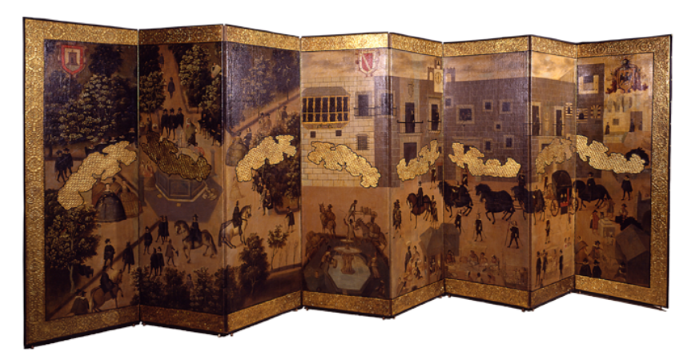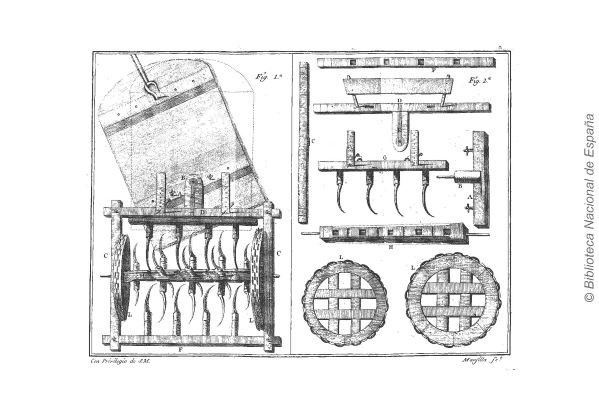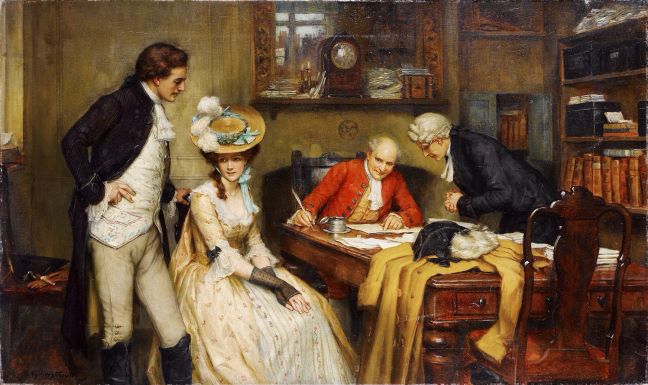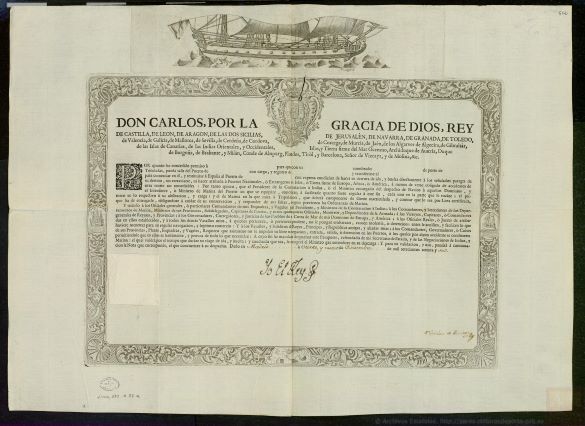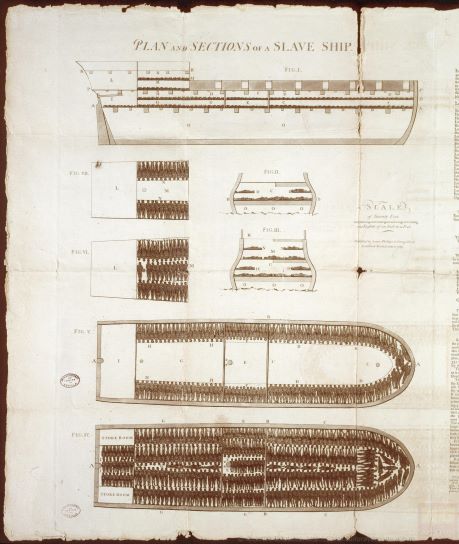Representation of 16th-century Seville from the west side of the Guadalquivir River
Edad Moderna
Image of a five-panelled folding screen depicting the Palace of the Viceroys in Mexico before it burned down in the turmoil of 1692.
Drawing of “Máquina para trillar las mises” by Lorenzo Sánchez Mansilla. It is an illustration of the work: “Dissertación de la máquina para trillar”, by Juan Cristóbal Manzanares
Everyday life. The image shows a painting depicting the formalisation of a woman’s dowry contribution. The work, entitled “The Bride’s Dowry”, is by José Gallegos y Arnosa.
Privateering patent granted by Charles III, which is part of a set of several patents he granted around 1771. The upper part shows the side view of a ship which, together with the border headed by the Royal Arms, serves as ornamentation for these patents. The patent was engraved by Hipólito Recarte.
Representation of a masked ball held, probably, at the Teatro del Príncipe in Madrid, painted by Luis Paret and Alcázar around 1767.
Image representative of the greatness of Spain and its monarchy.
Representation of cochineal cultivation and production. The image shows a picture of a cultivated cactus, where the mealybug has swarmed well.
The image depicts the plan and section of a ship engaged in the black slave trade. The document is written in English and published in London.
The image depicts shares in the Real Compañía de San Fernando de Sevilla, in favour of Pedro de Astrearena, a resident of Madrid, worth 250 pesos each.


